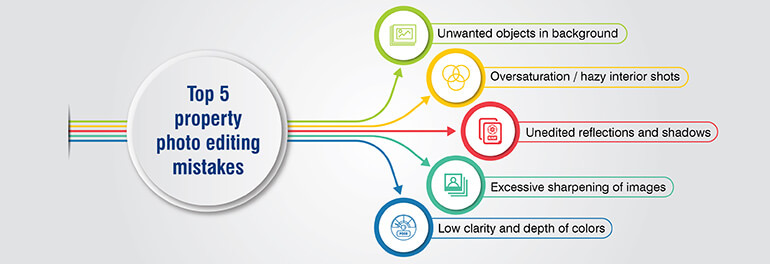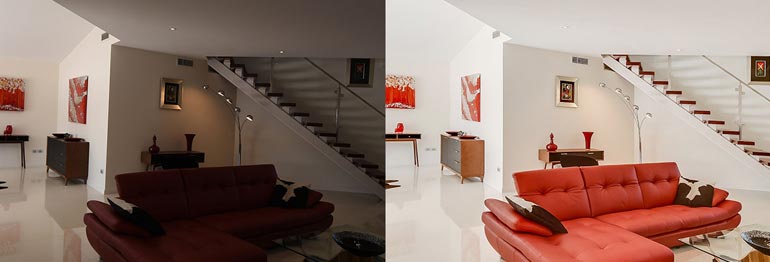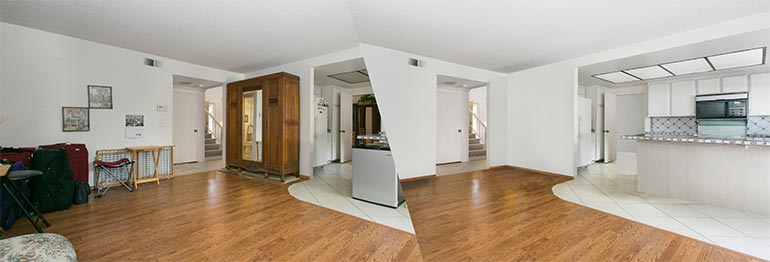10 Powerful eCommerce Data Collection Strategies & Examples
High-quality real estate photos attract more buyers and boost sales. Avoid over-editing, poor object removal, and inconsistent styling by using professional tools, natural colors, and SEO optimization. Well-edited images enhance trust, engagement, and property appeal.
Table of Contents
In the competitive world of real estate, 90% of home buyers begin their property search online, and listing photos influence 87% of buyers’ decisions (National Association of Realtors, 2023). High-quality real estate images can boost engagement and attract more potential buyers, while poorly edited photos can misrepresent a property and reduce trust.
Unfortunately, many real estate professionals make common photo editing mistakes that negatively impact their listings. From over-saturation to inconsistent styling, these errors can make properties look unnatural, unappealing, or even deceptive. In this article, we’ll discuss the top five real estate photo editing mistakes, their impact, and best practices to avoid them.

Why It’s a Problem
Over-saturating images make property photos appear artificial and unrealistic. Overuse of contrast, vibrance, and saturation settings can result in neon-green grass, overly blue skies, or unnatural wall colors, which can mislead buyers.
Impact on Property Listings
Best Practices
 Too much color saturation? Photo Editing Tips
Too much color saturation? Photo Editing Tips
Why It’s a Problem
High Dynamic Range (HDR) editing is great for balancing shadows and highlights, but excessive HDR can make images look over-processed and cartoonish. Similarly, over-sharpening creates unnatural, harsh lines that make photos look unrealistic.
Impact on Property Listings
Best Practices
 Creating an HDR-like Image From a Single RAW File in Lightroom
Creating an HDR-like Image From a Single RAW File in Lightroom
Why It’s a Problem
Removing unwanted objects (wires, trash cans, furniture) is a common practice in real estate photography, but improper cloning or editing can create noticeable distortions. If not done correctly, it can lead to repetitive patterns, blurry patches, or missing shadows that alert buyers to manipulation.
Impact on Property Listings
Best Practices
 Remove Unwanted Objects using Clone Tool in Photoshop
Remove Unwanted Objects using Clone Tool in Photoshop
Why It’s a Problem
Exposure settings directly impact how bright or dark a photo appears. Overexposing an image can wash out details, while underexposing it can make rooms appear smaller and darker than they are.
Impact on Property Listings
Best Practices
 Fix a Photo with Bad Lighting in Post Using Adobe Lightroom
Fix a Photo with Bad Lighting in Post Using Adobe Lightroom
Why It’s a Problem
When a listing has inconsistently edited images, it can confuse potential buyers. For example, if one photo has a warm tone while another has a cool tone, it disrupts the visual storytelling of the property.
Impact on Property Listings
Best Practices
By following these professional photo editing tips, you can create visually appealing, high-converting real estate listings that attract more buyers.
A real estate photographer and videographer from the USA needed professional photo editing services to enhance property images and videos for listings. The client faced issues with time-consuming editing, inconsistent image quality, and the need for high-volume processing while maintaining quick turnaround times.
Hitech BPO provided professional real estate photo editing services, including HDR enhancement, sky replacement, object removal, and color correction. Their expert team ensured fast delivery, consistent quality, and bulk editing capabilities.
The final deliveries customers get:

Real estate photo editing plays a crucial role in attracting potential buyers and securing faster sales. However, common mistakes such as over-saturation, poor object removal, inconsistent styling, and excessive HDR effects can make a property listing less appealing.
By following best practices for natural and professional editing, real estate professionals can ensure their listings stand out in a competitive market. Avoiding these five key mistakes will increase buyer trust, engagement, and ultimately, sales.
If you’re looking for expert real estate photo editing services, consider partnering with a professional editing team to enhance your listings.
What’s next? Message us a brief description of your project.
Our experts will review and get back to you within one business day with free consultation for successful implementation.
Disclaimer:
HitechDigital Solutions LLP and Hitech BPO will never ask for money or commission to offer jobs or projects. In the event you are contacted by any person with job offer in our companies, please reach out to us at info@hitechbpo.com
Leave a Reply